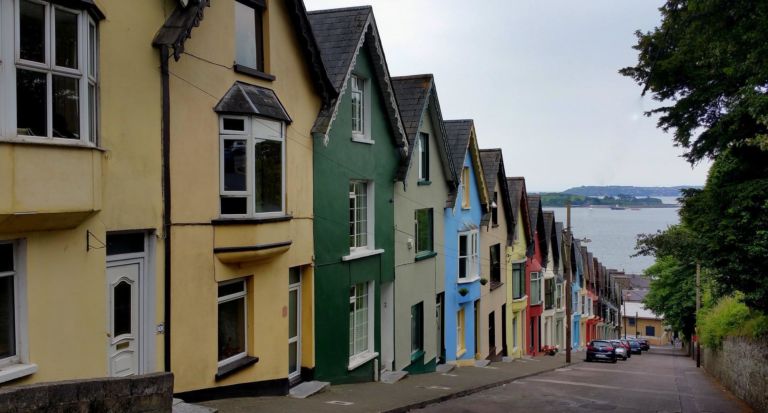“There are two ways of exerting one’s strength: one is pushing down, the other is pulling up,” Booker T. Washington said. We have had a reminder in recent weeks that there is a third way to exert one’s strength, that is, by pulling down those who are exalted. But Washington also reminds us, “You can’t hold a man down without staying down with him.” Nobody can get ahead or rise up if the goal is to bring others down.
Reducing poverty and inequality for all Americans may require acknowledging how past policies deliberately closed off opportunity for some, and other policies unintentionally had the same effect. American Enterprise Institute President Robert Doar covers some of that history, while also noting the progress that has been made in a recent essay. Raj Chetty’s Opportunity Insights uses big data to document the effects by place to suggest policy remedies.
Few people would question that some systems and institutions in America were developed with the explicit goal of protecting the rights and privileges available to whites and denying those rights and privileges from blacks, Hispanics, and people from all corners of Asia (not to mention Jews, Arabs, Poles, Italians, and other groups who were at various times on the wrong side of the cultural divide). Other policies, programs, and institutions were created to help some of those populations but unintentionally erected new barriers and imposed new stigmas.
Whether intended for good or ill, policies enacted in the past have lingering effects that may limit the opportunities available to African Americans. The most egregious of these, slavery and legal segregation, have been gone for a lifetime or longer, but others are still actively reinforcing inequality.
Housing restrictions from redlining to zoning have often had a racial component, particularly in Northern cities. Because of longstanding formal, but extralegal points system, the first black family did not move into the wealthy Grosse Pointe area bordering Detroit until 1968 and were greeted with hostility. Six years later, the New York Times reported, newcomers faced no opposition, but black families that could afford a home chose to live elsewhere. The area remains 90% white and has lost population along with the rest of Metro Detroit for the last 50 years.
Conor Dougherty’s Golden Gates provides a painful look at the ways housing policy creates and exacerbates inequality in San Francisco and around the country by limiting the supply of housing. Some of the policies were overtly racist, and others just happened to have racial impacts because they protected incumbent homeowners who were more likely to be white.
Combating bad practices of the past does not require new race-based policies. Salim Furth and Emily Hamilton of the Mercatus Center at George Mason University and Brian Hodges of Pacific Legal Foundation have proposed ways to make housing more affordable and available to all. The progressive city councils of Durham and Raleigh have already implemented some of their market-friendly reforms that allow homeowners to add housing on their own property. A number of similarly race-blind policies would reduce wealth inequality across races by making it easier to find housing, buy property, and build wealth.
Work restrictions like the minimum wage, occupational licensing, and unions were intended to limit opportunities for African Americans. James Gilbert Cassedy documented the challenging history of African Americans and the American Labor Movement in a 1997 essay for the National Archives,
African-American leaders were disappointed that the Wagner Act of 1935 did not contain prohibitions against union race discrimination. In 1930 no more than 50,000 out of 1,500,000 black workers engaged in transportation, extraction of minerals, or manufacturing were members of any trade union.… A large number of member unions did not permit African Americans to join their ranks.
My colleague Jon Sanders explored the racist origins and impacts of the excessive training requirements for barbers, which have been extended to African hair braiding.
Barriers to integration forced blacks to establish parallel institutions, churches, colleges, banking, insurance, and even fraternal organizations and sororities. Highways cut through African-American neighborhoods with eminent domain and allowed whites to move into segregated suburbs.
Similarly, progressivism’s infatuation with eugenics meant abortion was often promoted as a tool to limit black births. North Carolina’s forced sterilization program disproportionately targeted black women and men from the 1950s until the Eugenics Board was formally abolished in 1977, as my former colleague Darren Bakst highlighted in a paper that helped pave the way for reparations to those women and their families.
Even the best intentions ended up harming African Americans. Integration for all its benefits ended many black businesses, as it put them into a single market to compete with the largest white companies that could pay more for the best workers and otherwise use their advantages of size and money. Affirmative action led some to question whether African Americans earned their place and other programs created a separate process for minority students. Urban renewal displaced black families, disrupted black neighborhoods, and forced cities to adopt zoning rules. All told, housing policies have left families in predominantly black neighborhoods with a fraction of the wealth of similarly situated families in white neighborhoods.
My John Locke Foundation colleagues Jon Guze and Mike Schietzelt have written on the problems with our criminal code and justice system, though not always noting the racial implications. Terry Stoops has advocated for more school options that can help poor families escape failing schools. Sanders explained how all of these policies and their presumption of liberty is the best way to help communities of color and low-income families.
Soren Kierkegaard emphasized that loving our neighbor means lifting ourselves to recognize our equal humanity before God without demanding likeness that erases our unique individuality on earth. We acknowledge our sins and repent, but that does not mean erasing our past. Our scars made us who we are. America started from a promise, and each generation has tried to live to that promise.
A recent Law & Liberty essay provided a poignant quote from Glen Loury:
While we cannot ignore the behavioral problems of the so-called black underclass, we should discuss and react to those problems as if we were talking about our own children, neighbors, and friends. … Our failure to do so is an American tragedy. It is a national, not merely a communal, disgrace. Changing the definition of the American “we” is a first step toward rectifying the relational discrimination that afflicts our society, and it is the best path forward in reducing racial inequality.
Protesters this year have been right to criticize the historical pushing down of others, but they have erred in pulling down accomplishments that have lifted others. If we want upward mobility, then we should lift up our peers and our children who can go higher, and when we have succeeded, we should reach back and pull up those who have not been as fortunate.


